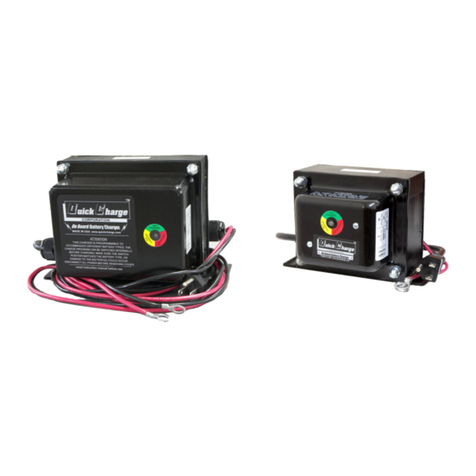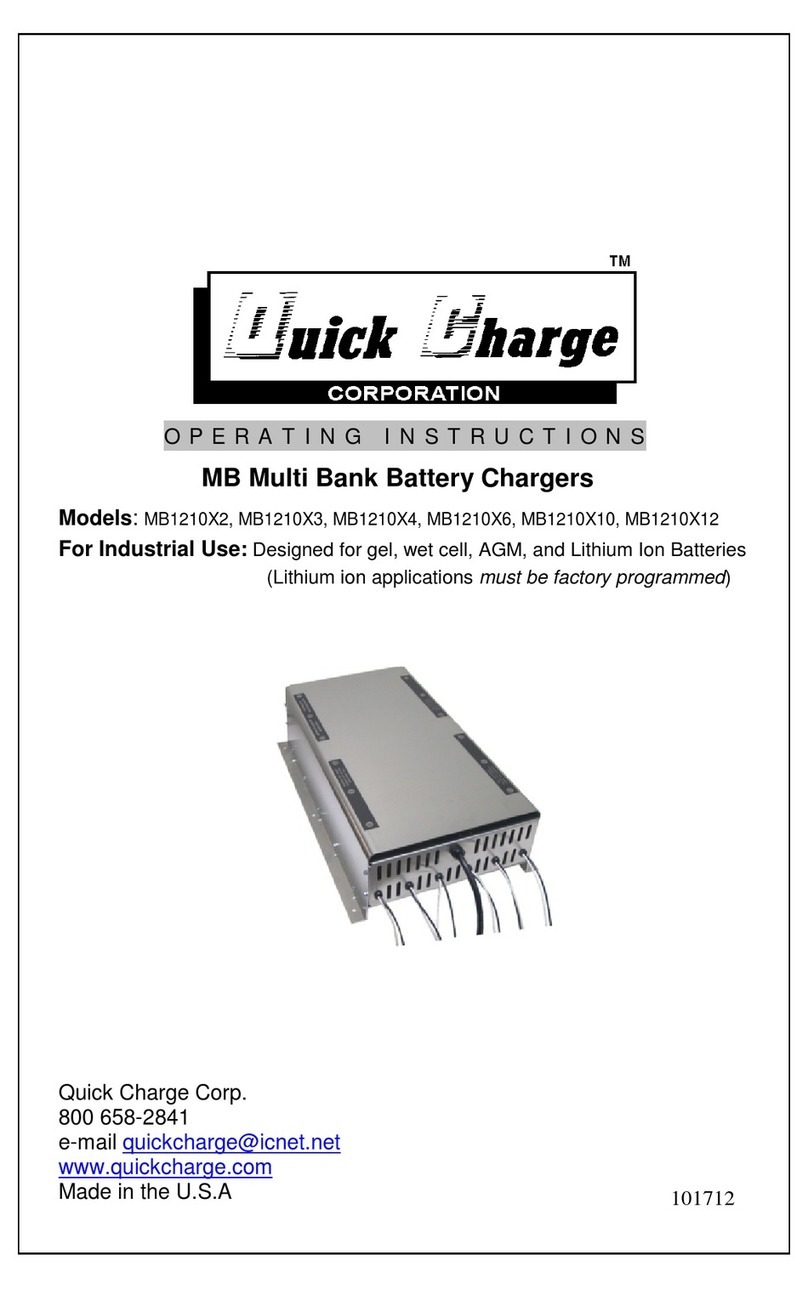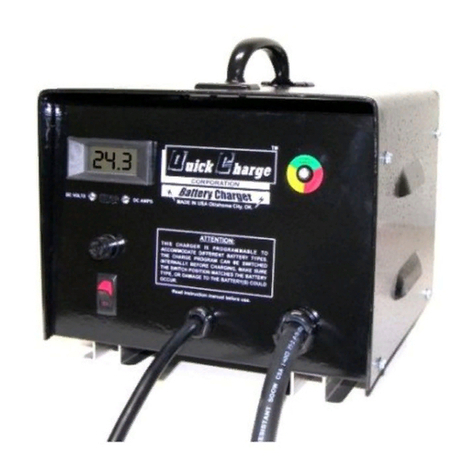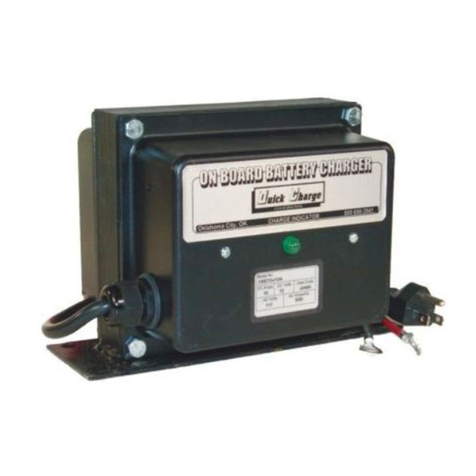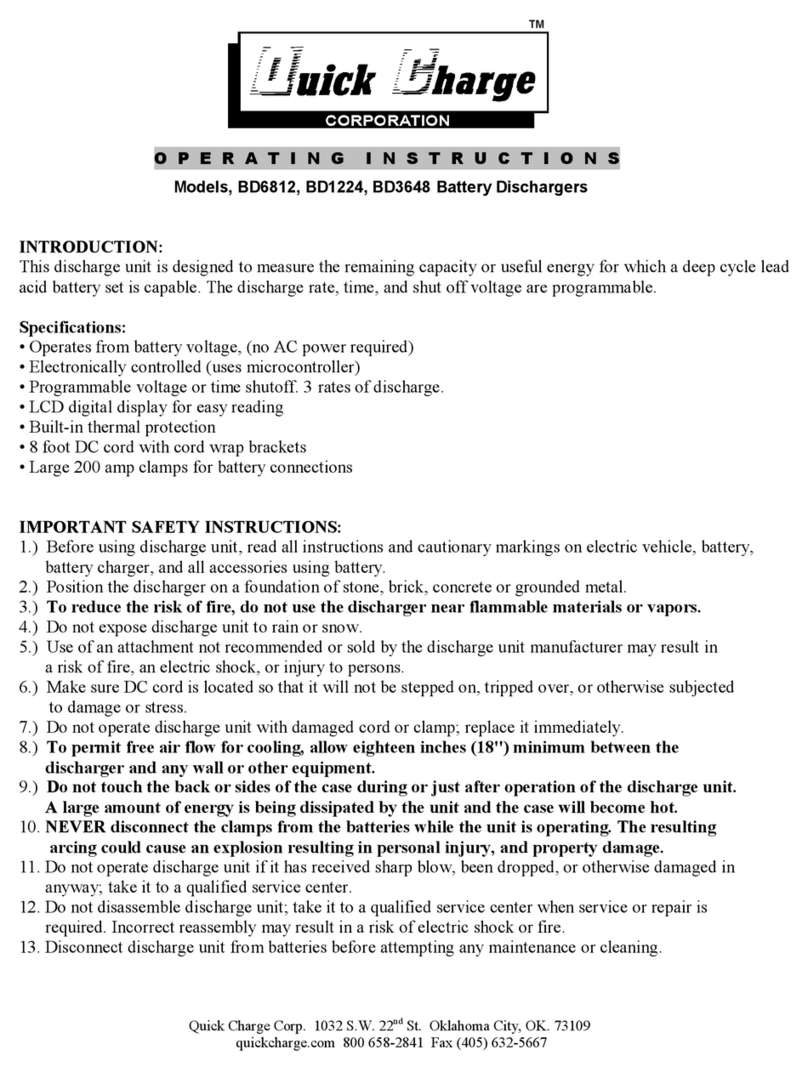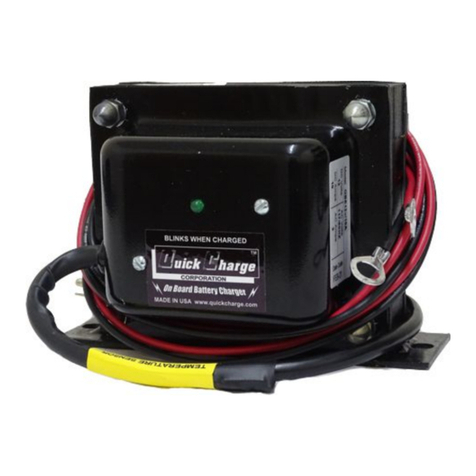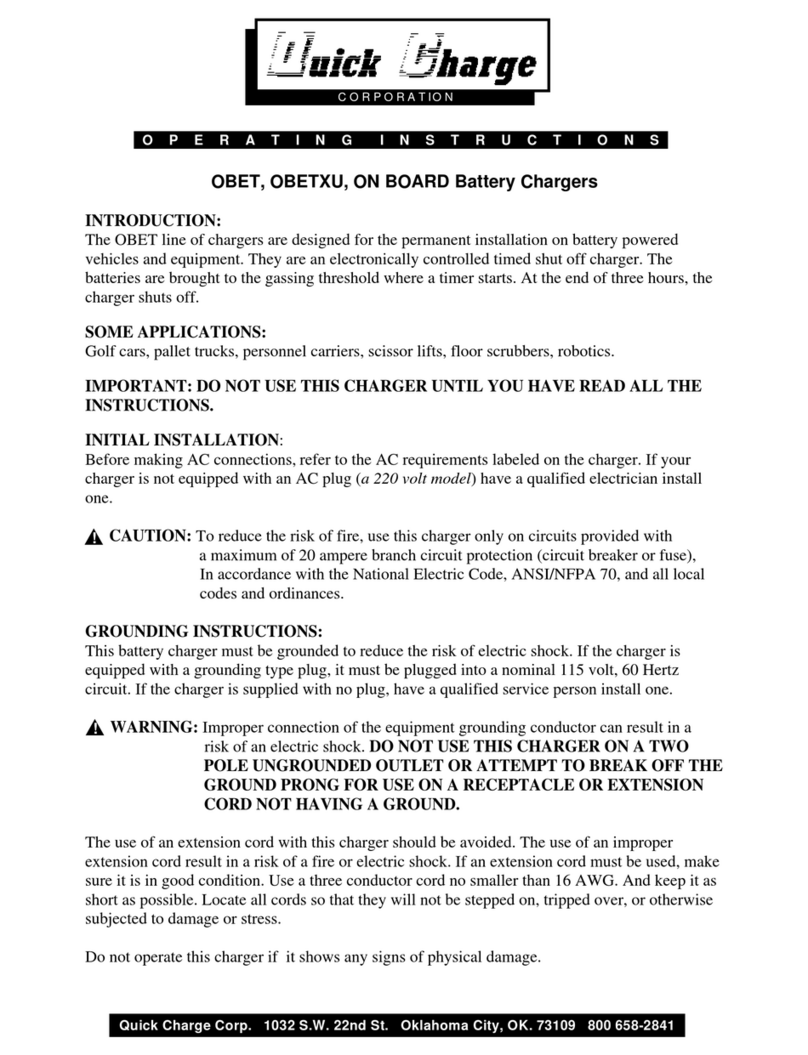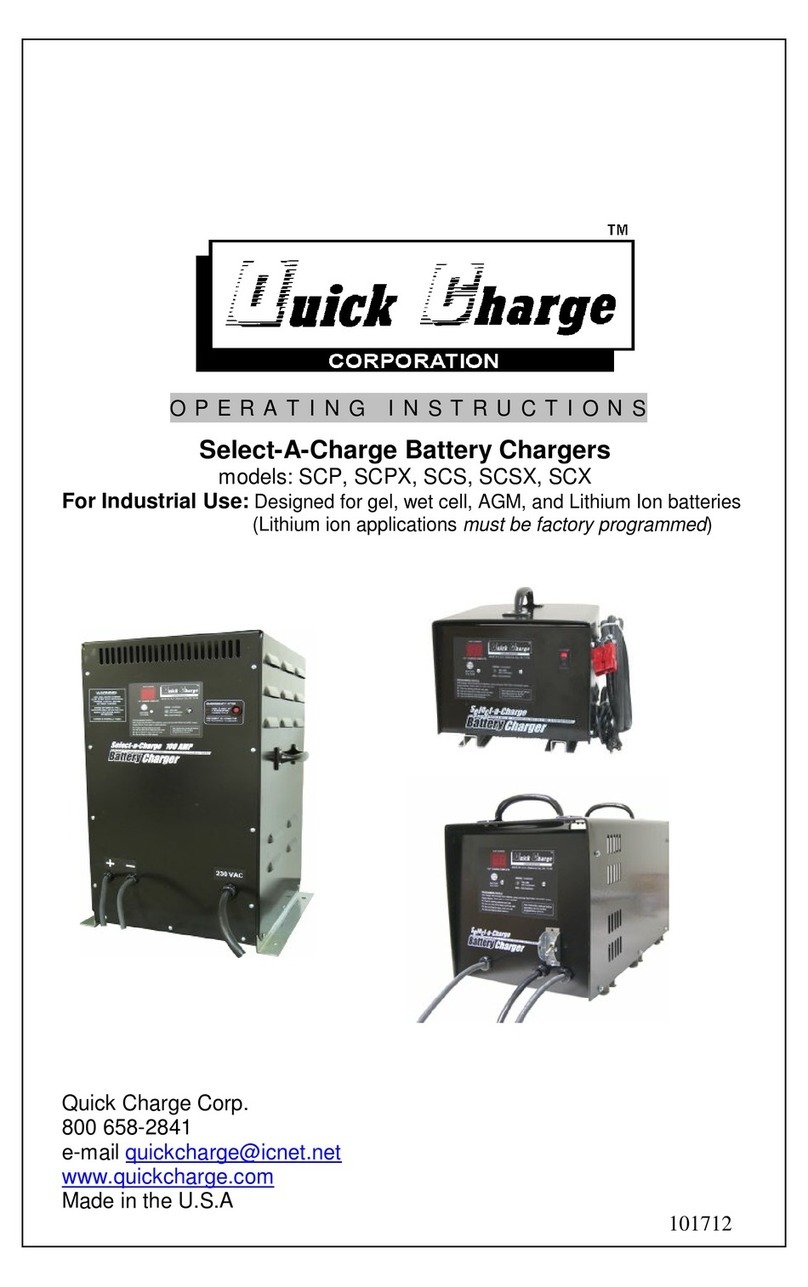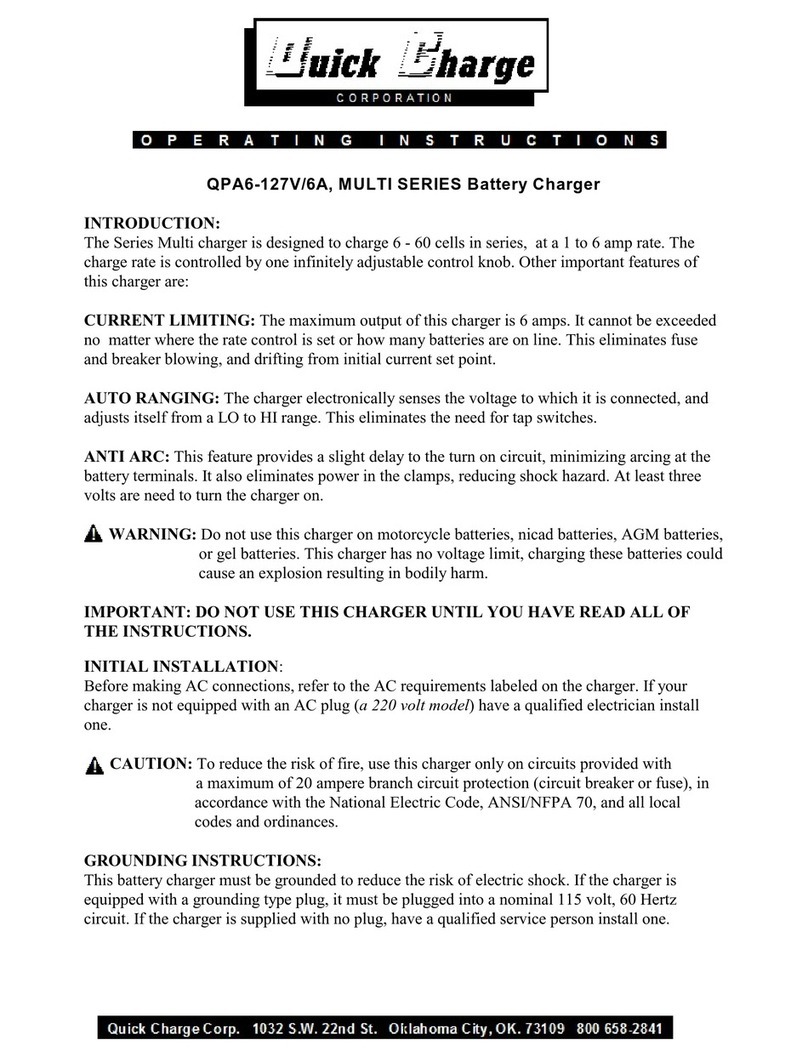
MAINTE
NANCE:
Keep charger clean using a damp cloth only.
TROUBLE SHOOTING:
DANGER:
To reduce the risk of electric shock, always disconnect both the AC power supply cord and the
outp
ut
leads or connector before attempting any maintenance cleaning.
1).
POWER LIGHT DOES NOT COME ON WHEN
PO
WER IS APPLIED
Check connections. Make sure you are plugged into a live AC circuit. Check fuse. If blown, replace with one having
the same ratings.
3).
AC LINE FUSE OR CIRCUIT BR
EAKER BLOWS:
The
charger is shorted internally.
4).
NO POWER IS PRESENT ACROSS THE DC LEADS WHEN A VOLT METER IS
CONNECTED:
The charger will not turn on until
connected
to the battery. The battery must have at least 5 volts to turn the
charger on.
5).
BATTERIES DON T REC
EIVE FULL CHARGE
:
Your volt setting might be too low.
6).
NO VOLTMETER READING:
The sense leads on the dc cables may be broken.
QUI
CK CHARGE
QPA12v/50A
APU
Battery Charger
LIMITED WARRANTY
Quick Charge
C
orporation warrants the
QPA12v/50A
charger
for three (3) years from the date of purchase.
After the warranty period, chargers returned to the
factory for repair will be charged a minimum ra
te of $25.00. Charger will be returned, freight and repair charges, C.O.D. unless other arrangements have been
made
. This warranty covers all defects in manufacture and performance, provided the unit is operated in compliance with manufacture s operating i
nstructions.
For repairs to be made at the Quick Charge factory, a charger and/or component(s) should be sent, freight prepaid to Quick Charge at::
Quick Charge Corp.
1032 S.W. 22nd St
.
Oklahoma City, OK. 73109
Quick Charge, will at it s option, repair or replace the charger or component in question. The repaired item will then be returned, freight prepaid by Quick Charge.
This warranty is void if the charger or component have been alte
red, changed, or repaired by anyone not authorized by Quick Charge, or if the charger or
component, have been subjected to misuse, negligence, or harsh environmental conditions. (Except those chargers designed for such conditions)
If returning the charger
to the factory is not practical, replacement parts may be shipped to the customer for field repair at no charge. On parts such as circuit
boards, the customer will be required to return the board suspected to be defective to Quick Charge, freight prepaid.
If such defective parts are not returned, the
customer will be invoiced for the repair parts.
Field repairs are made at the user s own risk. Authorization by Quick Charge to repair refers to maintaining the
warranty only. Quick Charge assumes no responsi
bility or liability for field servicing, and shall not be responsible for incurred travel or labor charges.
Quick Charge corporation shall not in any event be liable for the cost of any special, indirect or consequential damages to anyone, product or thing
.
This warranty
is in lieu of all other warranties expressed or implied. Quick Charge neither assumes nor authorizes any representative or other person to assume for us any
liability in connection with the sale of this product.

